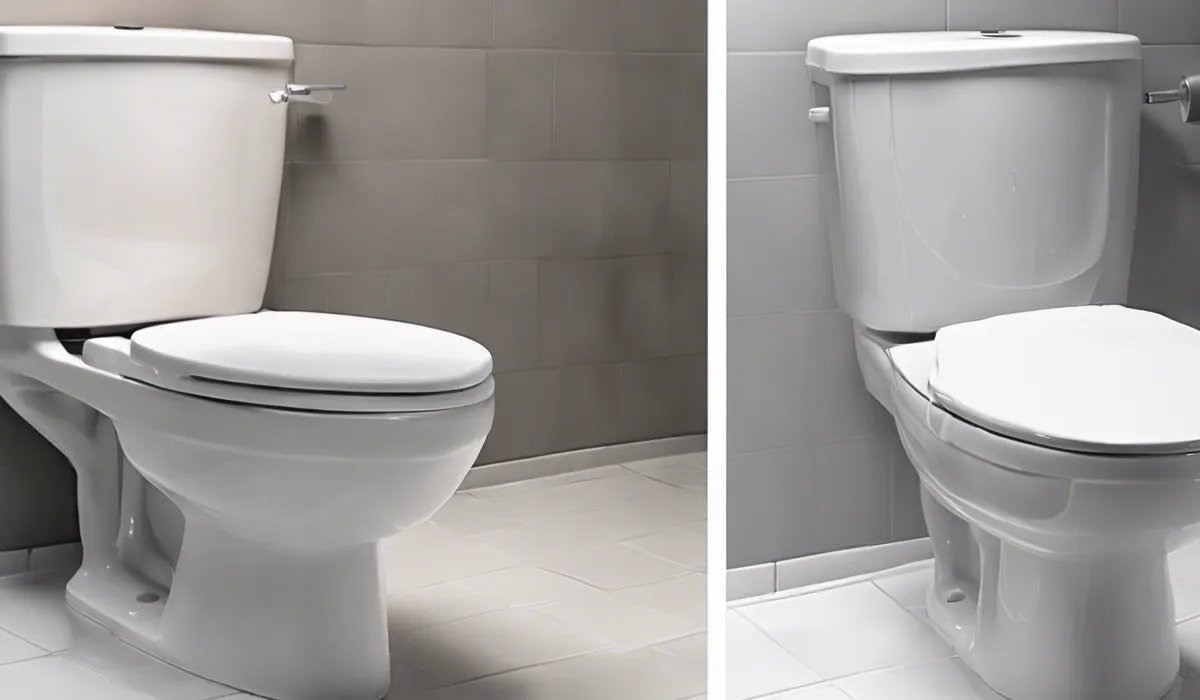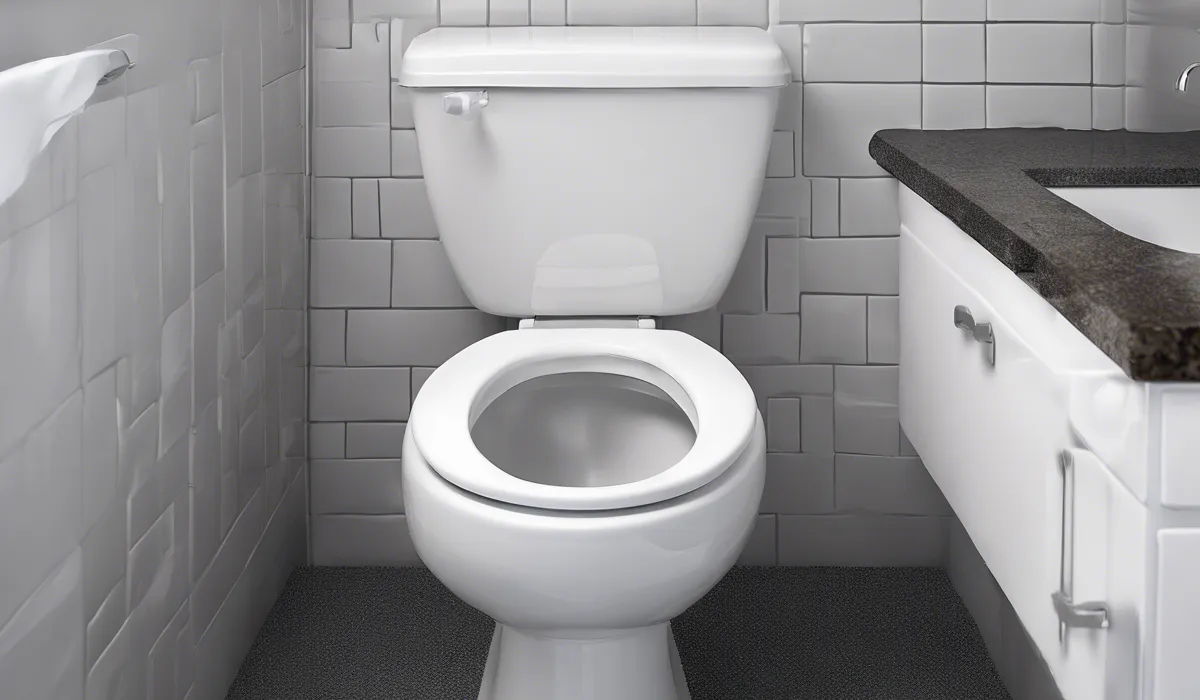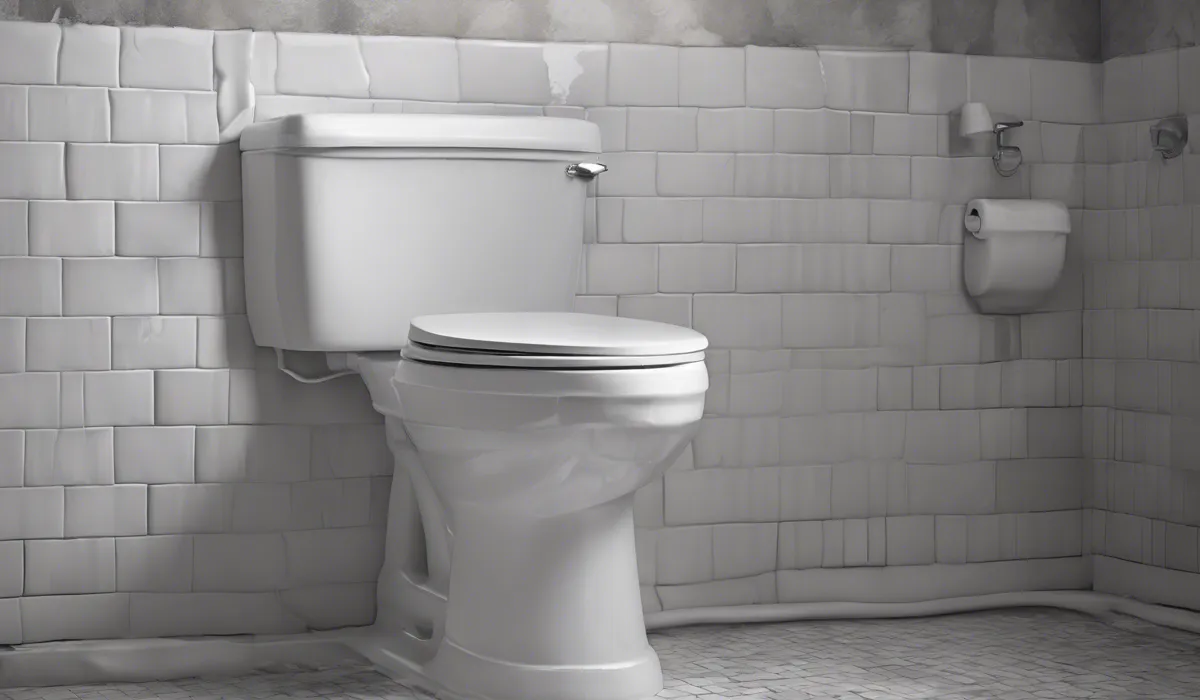Mold in your toilet bowl is often due to lingering moisture, lack of ventilation, and infrequent cleaning. Spores thrive in the damp environment provided by the toilet’s water and under the rim. Regular cleaning with mold-killing products can prevent its growth.
Causes of Mold Growth in Toilet Bowls

Environmental Factors Favoring Mold
Mold can grow anywhere with the right conditions. In our bathrooms, high humidity and dampness create a perfect home for mold.
When we shower or bathe, moisture fills the air and settles on surfaces, including our toilets.
If the bathroom lacks good airflow or doesn’t get enough sunlight, it gives mold a chance to settle in and grow.
Infrequent Use or Stagnant Water
Toilets that do not get used often can become mold havens. Water sitting in the bowl or tank for too long becomes stagnant.
This still water is another favorite spot for mold to grow. Some people try to save water by not flushing as often, but this can lead to more mold growth.
Nutrient Sources for Mold
Mold needs food to grow, and it finds plenty in our toilets. Waste provides organic matter, and hard water contributes mineral deposits.
Both serve as food sources for mold. As these materials build up, they give mold even more to thrive on.
Poor Cleaning Practices
When we do not clean our toilets well, we give mold a chance to grow. If cleaning is not done regularly or we use cleaners that do not kill mold, it can take hold and spread.
It’s important to clean all parts of the toilet, including under the rim and in the tank.
Health Risks and Implications of Mold in Toilets

Types of Mold Commonly Found in Toilets
One type of mold often found in toilets is black mold, also called Stachybotrys chartarum. This mold is known for being particularly harmful.
But there are other types of mold that can grow in toilets too. Each type has its own look and effects on health.
Potential Health Effects
Mold can cause health problems, especially for people with allergies or asthma. It can make us sneeze, cough, and feel sick.
Some molds make poisons called mycotoxins that can be very harmful to our health. It’s important to keep mold out of our homes to stay healthy.
Vulnerable Populations
People who already have trouble with their breathing or immune systems need to be extra careful about mold.
If someone has asthma or their body has a hard time fighting off illness, mold can be a big problem. These people need to live in places that are very clean and free of mold.
Prevention and Removal Strategies

Regular Cleaning and Maintenance
To stop mold from growing in our toilets, we need to clean them often. It’s best to use cleaners that are made to kill mold.
Scrubbing with the right tools helps too. If we keep our toilets clean, we can keep mold away.
Improving Ventilation and Sunlight Exposure
Good air flow helps keep mold from growing. Using bathroom fans or dehumidifiers takes the wetness out of the air.
Letting sunlight in can also help. Opening windows or using blinds that let light through can make a big difference.
Water Treatment and Toilet Upkeep
If we have hard water, treating it can help stop mineral deposits that feed mold. Fixing any leaks and checking that our toilets work right also helps prevent mold.
Keeping the water in our toilets clean and moving stops mold from growing.
FAQs About Mold in Toilet Bowls
Why is mold growing in my toilet bowl?
Mold grows in toilet bowls due to consistent moisture, poor ventilation, and infrequent cleaning, creating an ideal environment for spores to thrive, especially under the rim and in the water.
How can I prevent mold from appearing in my toilet?
Prevent mold by regularly cleaning your toilet with mold-killing products, improving ventilation in the bathroom, and reducing moisture where possible.
Is mold in the toilet bowl a sign of poor hygiene?
Mold presence can indicate infrequent cleaning, but it may also occur in well-maintained toilets if moisture and poor ventilation issues are not addressed.
Can mold in the toilet bowl affect my health?
Yes, exposure to mold can cause health issues, especially for individuals with allergies, asthma, or compromised immune systems.
What type of cleaning products are effective against toilet bowl mold?
Use cleaning products that contain bleach, vinegar, or other mold-killing agents specifically designed to eliminate mold and mildew.
Final Thoughts
Mold in the toilet bowl arises from persistent moisture, inadequate ventilation, and sporadic cleaning. The toilet’s wet conditions, especially under the rim, provide an ideal environment for spore proliferation.
Employing mold-killing cleaners for routine maintenance is essential to inhibit mold development.
Useful Resources
- https://www.townofhalfmoon-ny.gov/water-department/faq/black-stains-in-a-toilet-bowl-why-how-to-remove-them
- https://www.ag.ndsu.edu/news/newsreleases/2010/aug-9-2010/red-substance-in-tub-toilet-is-bacteria/
- https://web.extension.illinois.edu/askextension/thisQuestion.cfm?ThreadID=26257&catID=32&AskSiteID=34
